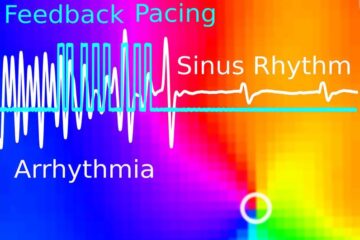NMR scan shows if precious wine is spoiled

Some bottles of wine are worth thousands of dollars. But if oxygen has leaked past the cork, it could be thousand-dollar vinegar — and there’s no way to tell without opening the bottle. Now chemists at the University of California, Davis, can check an unopened bottle for spoilage using nuclear magnetic resonance (NMR), the same technology used for medical MRI scans.
Natural bacteria in wine use oxygen from the air to turn alcohol into vinegar, or acetic acid. If a wine bottle is securely corked, the small amount of air in the bottle is quickly used up. If the cork is leaky and air gets in, the vinegar flavor eventually becomes strong enough to make the wine undrinkable.
NMR scans of wine show distinct peaks for water, ethanol and acetic acid, said Matthew Augustine, an associate professor of chemistry at UC Davis. That means you can measure the amount of each component,
Augustine and graduate student April Weekley designed equipment to put whole bottles of wine into one of their powerful magnets, so that they could scan a whole bottle without opening it. The instrument can detect acetic acid at less than one-tenth the amount that would spoil a wine, Augustine said.
They tested bottles of Cabernet Sauvignon wine from the UC Davis Department of Viticulture and Enology’s collection. Bottles from 1950, 1960 and 1968 were spoiled, while bottles from 1956, 1970 and 1977 were likely still drinkable, Augustine said. Although the oldest wine had the highest level of acetic acid, there was no relationship between age and alcohol content or likelihood of being spoiled. Examining the corks for apparent leaks also did not give useful clues about the quality of the wine, he said.
Additional Contact Information:
Matt Augustine, Chemistry,
530-754-7550,
augustine@chem.ucdavis.edu
Augustine thinks that the technology, for which a patent has been filed, could be useful for auction houses and buyers specializing in high-end wines. It could also be adapted to look at other components of wine responsible for flavor, color, aging qualities and potential health benefits.
Media Contact
All latest news from the category: Life Sciences and Chemistry
Articles and reports from the Life Sciences and chemistry area deal with applied and basic research into modern biology, chemistry and human medicine.
Valuable information can be found on a range of life sciences fields including bacteriology, biochemistry, bionics, bioinformatics, biophysics, biotechnology, genetics, geobotany, human biology, marine biology, microbiology, molecular biology, cellular biology, zoology, bioinorganic chemistry, microchemistry and environmental chemistry.
Newest articles

Wildfire danger to increase due to climate change
WSL Institute for Snow and Avalanche Research (SLF) researchers expect an elevated wildfire danger in the Alpine Foreland from 2040 onwards due to changing meteorological conditions. The danger currently remains…

Advanced Brain Science Without Coding Expertise
Researchers at Helmholtz Munich and the LMU University Hospital Munich introduce DELiVR, offering a new AI-based approach to the complex task of brain cell mapping. The deep learning tool democratizes…

Gentle defibrillation for the heart
Using light pulses as a model for electrical defibrillation, Göttingen scientists developed a method to assess and modulate the heart function. The research team from the Max Planck Institute for…





















